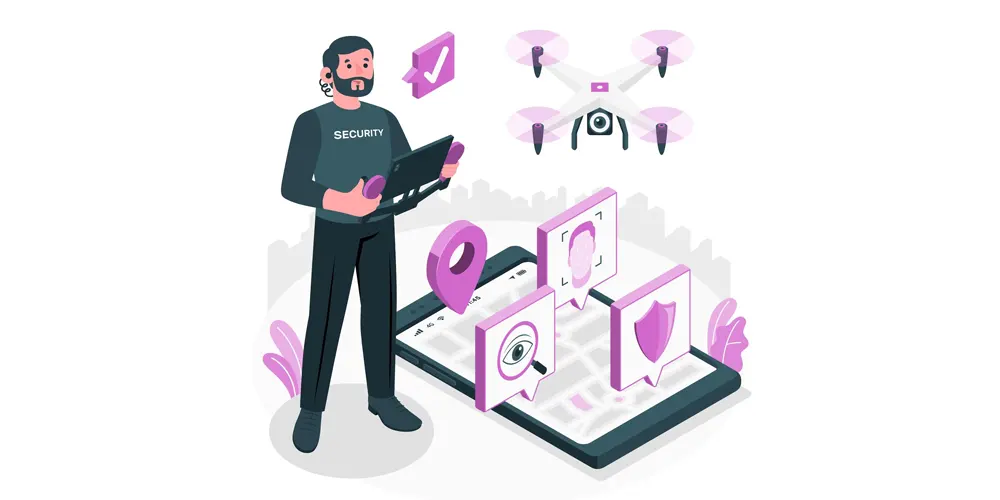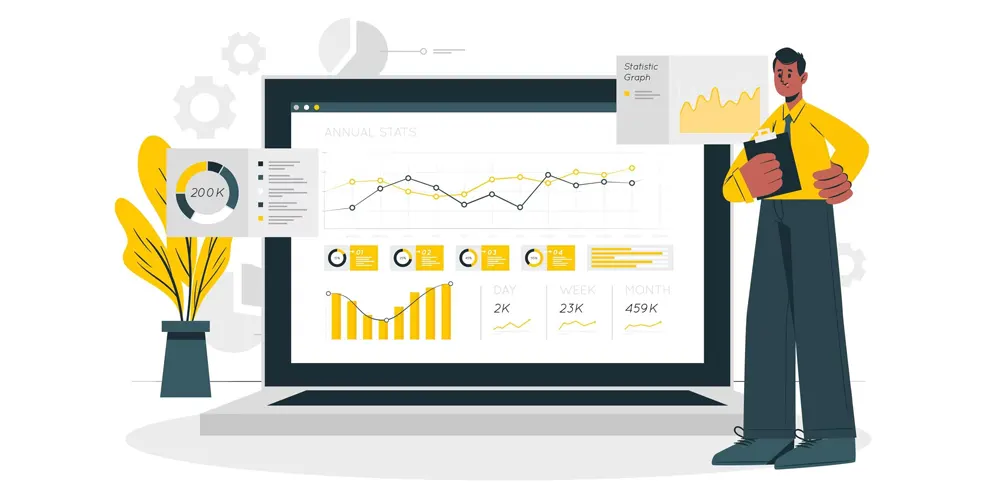VoIP Carrier Network Security - How to Conduct Security Audit?
A lot of sensitive information is being exchanged over phone calls as you read this sentence. The bad actors are aware of this and will go to substantial lengths to get their hands on this information.
If they succeed, it could be the end of your business and personal reputation in the telecommunication world. A VoIP Carrier needs to be proactive in securing their VoIP network from such threats.
The most effective way to improve your VoIP network security continuously is to conduct regular VoIP Network Security Audits. These will help you identify any weak spots and vulnerabilities in your network.
Once identified, you can undertake the task of fixing these weak points and vulnerabilities. So how does one conduct a VoIP Network Security Audit correctly?
Glad you asked! I shall guide you through all the steps of conducting a VoIP Network Security Audit. However, there is some preparation involved in this. So let’s start there.
Defining The Scope and Objectives of The VoIP Network Security Audit

One should not just get up one day and decide to conduct a VoIP Network Security Audit. One needs to know, understand and plan before the audit can be conducted.
Things like what needs to be tested, how it will be executed and what measures will be implemented to improve security need to be clear before anything starts.
The preliminary or core objectives of any VoIP Network Security Audit should be the following:
- Identify and assess the organization's current state of network security. This includes understanding the organization's network infrastructure, security policies and procedures, and incident response plans.
- Identify and assess the organization's risks to network security. This includes understanding the organization's assets, threats, vulnerabilities, and impact of a security breach.
- Make recommendations for improving the organization's network security. This includes recommendations for changes to security policies and procedures, incident response plans, and network infrastructure.
The specific objectives of the audit may vary depending on the specific needs of the organization. Here are some secondary yet important objectives:
- To identify and assess the organization's compliance with relevant security standards and regulations.
- To identify and assess the organization's ability to protect its data from unauthorized access, use, disclosure, disruption, modification, or destruction.
- To identify and assess the organization's ability to detect and respond to security incidents.
Other things need to be considered to ensure all-round security improvements for the VoIP Network. Here are some considerations a wholesale VoIP carrier should account for.
- The audit should cover all aspects of the organization's network. This includes the physical infrastructure, the logical infrastructure, and the applications that run on the network.
- The audit should consider the specific threats and vulnerabilities that are relevant to VoIP networks.
- The audit should be conducted in a way that minimizes disruption to the organization's business operations
By following these guidelines, VoIP carriers can ensure that their network security audits are effective and yield results.
Steps to Conduct a VoIP Carrier Network Security Audit
To conduct a VoIP Carrier Network Security Audit, you need to undertake a lot of different activities. We have broken down the entire process into easy-to-follow steps for you. Let’s make your VoIP Network secure one step at a time.
Step 1 - Risk Assessment

Conducting a risk assessment within a network security audit for a VoIP carrier is of paramount importance. It acts as a critical lens through which vulnerabilities in the network infrastructure are revealed.
This assessment not only identifies potential weak points but also aids in prioritizing security measures based on the severity of risks. We have divided this procedure into the following steps:
1. Identifying potential risks and threats.
Begin by conducting a comprehensive review of the wholesale VoIP carrier's network, systems, and processes. Identify potential risks and threats that could compromise network security.
Consider both internal and external threats, such as unauthorized access, malware, DDoS attacks, social engineering, and vulnerabilities in VoIP protocols (SIP, RTP).
2. Evaluating the impact of security breaches.
Assess the potential consequences of security breaches on the VoIP carrier's operations. This could include financial losses, service disruptions, damage to reputation, legal repercussions, and privacy violations.
Quantify the impact wherever possible, such as estimating financial losses or downtime costs.
3. Prioritizing risks based on severity.
Once risks and threats are identified and evaluated, prioritize them based on severity and potential impact.
Consider factors like the likelihood of occurrence, the extent of damage, and the potential harm to the business. Risks with higher severity should receive greater attention.
Use risk assessment frameworks or methodologies like CVSS (Common Vulnerability Scoring System) to assign numerical scores to risks and aid in prioritization.
Step 2 - Network Architecture Review

Conducting a network architecture review provides an in-depth understanding of how the network is structured and interconnected. This helps to identify potential vulnerabilities and points of entry for cyber threats.
The review ensures that security controls are correctly implemented, minimizing the risk of unauthorized access or data breaches. The review can be broken down as follows:
1. Examining the network topology.
Start by thoroughly examining the network topology of the wholesale VoIP carrier. This involves understanding how different network components, such as routers, switches, firewalls, and servers, are interconnected.
Document the physical and logical layout of the network to identify potential vulnerabilities and single points of failure.
2. Identifying access points and entry vectors.
Identify all potential access points and entry vectors that could be exploited by unauthorized users or malicious actors. These may include VPN connections, remote access services, cloud-based resources, etc.
Pay special attention to areas where external networks connect to the VoIP carrier's network, as these are often prime entry points for attackers.
3. Assessing the configuration of network devices.
Evaluate the configuration settings of network devices, including routers, switches, firewalls, and intrusion detection/prevention systems.
Verify that security best practices are followed in device configurations, such as using strong access controls, disabling unnecessary services, and keeping firmware/software up to date.
Review firewall rules to ensure they are appropriately configured to filter traffic and prevent unauthorized access.
Check for default or weak passwords and ensure proper authentication mechanisms are in place.
Step 3 - Security Policy Analysis

Conducting a security policy analysis involves evaluating and refining the company's security policies and procedures. The aim is to ensure they align with industry standards and best practices.
This process helps establish clear guidelines for network security, access controls, and incident response. The analysis involves the following sub-steps.
1. Reviewing existing security policies
Begin by examining the wholesale VoIP carrier's existing security policies. These include information security policies, access control policies, incident response plans, and any other relevant documents.
Ensure that all documented policies and procedures are readily accessible for review.
2. Ensuring policies are up-to-date
Verify that these policies are current and align with the latest industry best practices and regulatory requirements.
Check for policy revision dates and assess whether they have been updated in response to changing security threats and technologies.
3. Identifying gaps in policies
Analyze the security policies to identify any gaps or areas where they may not adequately address specific security risks or compliance requirements.
Cross-reference the policies with the findings from other audit steps to ensure they encompass all relevant aspects of network security.
Step 4 - Vulnerability Assessment

Conducting a Vulnerability Assessment involves systematically identifying weaknesses and potential entry points for cyber threats in the network. Doing so helps prioritize security measures and address critical vulnerabilities before they can be exploited.
This proactive approach not only enhances network security but also demonstrates compliance with industry regulations. Here is everything you need to get done:
1. Scanning for vulnerabilities in network devices.
Perform vulnerability scanning on network devices, including servers, routers, switches, and firewalls. Use specialized scanning tools to identify known vulnerabilities and misconfigurations.
Regularly update vulnerability databases and scanning tools to ensure accurate results.
2. Assessing the strength of authentication mechanisms.
Evaluate the strength of authentication methods used across the network. This includes assessing password policies, multi-factor authentication (MFA) implementation, and the use of strong cryptographic protocols.
Identify any weak or default passwords that could be exploited by attackers.
3. Analyzing firewall rules and access control lists.
Review the configuration of firewalls and access control lists (ACLs) to ensure they are correctly implemented.
Verify that firewall rules align with the organization's security policies and only allow necessary traffic while blocking unauthorized access.
Identify any overly permissive rules that could expose the network to unnecessary risk.
Step 5 - Traffic Analysis

Conducting Traffic Analysis involves monitoring and scrutinizing network traffic patterns to detect anomalies and potential security threats in real time.
This proactive surveillance helps in swiftly identifying and responding to suspicious activities, ensuring the integrity and availability of VoIP services. Here’s a breakdown of what you need to do:
1. Monitoring network traffic for anomalies
Continuously monitor network traffic to detect any unusual or unexpected patterns. This involves the use of network monitoring tools and intrusion detection systems (IDS) to capture and analyze data packets.
Set up alerts for traffic anomalies, such as unexpected spikes in data usage, unusual protocol activity, or traffic from unfamiliar sources.
2. Identifying suspicious patterns or activities
Analyze network traffic data to identify suspicious patterns or activities that could indicate a security breach. This includes looking for signs of unauthorized access, data exfiltration, or malware communication.
Correlate traffic patterns with known attack signatures and behavior-based analytics to detect potential threats.
3. Ensuring encryption and authentication of voice traffic
Verify that voice traffic, such as VoIP calls, is encrypted to protect sensitive call data from eavesdropping. This encryption should use strong cryptographic protocols.
Ensure that voice traffic is authenticated, preventing unauthorized access to the VoIP network and protecting against call spoofing or interception.
Step 6 - Penetration Testing

Conducting penetration testing in a network security audit for a VoIP carrier is indispensable. It involves simulating real-world cyberattacks to evaluate the network's defenses, identifying vulnerabilities, and assessing how well security measures hold up under pressure.
Let’s break down the process into simple sub-steps.
1. Simulating cyberattacks to test network defenses
Penetration testing involves conducting controlled and simulated cyberattacks on the wholesale VoIP carrier's network infrastructure, applications, and systems.
Skilled penetration testers attempt to exploit vulnerabilities in the same way that real attackers might. This includes attempting to gain unauthorized access, exfiltrate data, or disrupt services.
2. Evaluating the effectiveness of intrusion detection systems
During penetration testing, assess the performance of intrusion detection systems (IDS) and intrusion prevention systems (IPS). These security solutions are designed to detect and respond to suspicious activities and attacks.
Determine whether the IDS/IPS alerts are triggered appropriately and whether they effectively block or mitigate simulated attacks.
3. Remediating vulnerabilities discovered during testing
Once penetration testing identifies vulnerabilities or weaknesses, the next step is to prioritize and remediate these issues.
Develop a detailed report that includes a list of vulnerabilities, their severity, and recommendations for mitigation.
Collaborate with the organization's IT and security teams to address and fix the identified vulnerabilities.
Step 7 - Reporting and Documentation

Reporting and documentation serve as the tangible record of the audit's findings, recommendations, and actions taken.
A well-structured report not only communicates the state of network security effectively to leadership and technical teams but also provides a clear roadmap for enhancing security measures.
Here are all the things you need to get done.
1. Compiling findings from the audit
Gather all the findings, observations, and data collected during the network security audit of the wholesale VoIP carrier. This includes information from all the previous audit steps, such as risk assessments, policy analyses, vulnerability assessments, and penetration testing.
2. Providing recommendations for improvements
Based on the collected findings, provide detailed recommendations for improving the network security posture of the wholesale VoIP carrier. These recommendations should be practical, actionable, and tailored to address the specific issues and risks identified during the audit.
3. Creating a comprehensive audit report
Develop a comprehensive audit report that serves as the final deliverable of the security audit process. The report should be structured and organized clearly and understandably, including the following elements:
A. Executive Summary: Summarize the key findings, high-priority recommendations, and the overall state of network security in a non-technical manner for executive stakeholders.
B. Introduction: Provide an overview of the audit's purpose, scope, and methodology, as well as any limitations encountered during the audit process.
C. Audit Findings: Present the detailed findings of each audit step, including risk assessments, policy analyses, vulnerability assessments, traffic analysis, and penetration testing results. Use a combination of narratives, tables, and charts to convey the information effectively.
D. Recommendations: Outline the recommended actions to address identified vulnerabilities and security gaps. Prioritize these recommendations based on severity and potential impact.
E. Action Plans: Include action plans that describe how each recommendation can be implemented, including timelines, responsible parties, and resource requirements.
F. Appendices: Attach any supporting documents, evidence, or technical details that may be relevant to the audit findings.
Step 8 - Implementing Security Measures

The VoIP network security audit only uncovers vulnerabilities and risks, but taking action is what truly fortifies the network's defenses. It's the difference between knowing the weak points and shoring them up.
So here is everything you need to do to secure your VoIP network.
1. Discussing the importance of acting on audit findings
Stress the critical importance of taking action based on the findings and recommendations outlined in the audit report. Emphasize that these findings reflect potential vulnerabilities and security risks that need to be addressed promptly.
2. Implementing recommended security enhancements
Begin the process of implementing the security enhancements and remediation measures as recommended in the audit report.
This may involve a range of actions, such as patching software, strengthening authentication mechanisms, reconfiguring firewall rules, and improving network monitoring.
3. Continuously monitoring and updating security measures
Establish a system for ongoing monitoring and updating of security measures. Security is not a one-time effort; it requires continuous vigilance.
Implement security controls and mechanisms to detect and respond to new threats as they emerge.
Regularly review and update security policies and procedures to reflect changes in the threat landscape and the organization's operations.
Conclusion
The bad actors have found an easier and more lucrative stream of sensitive information in the form of VoIP Networks. If you fail to secure your network against such bad actors, it could spell disaster for you and your customers.
Trust and safety are two important factors for the telecommunication industry. To uphold these two values, a VoIP Carrier must actively improve their network security.
This can be done by the way to VoIP Network Security Audits. I hope this guide will help you in securing each element in your network!
























































































































